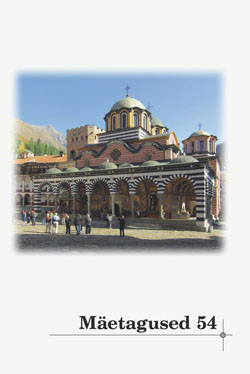Tummali ajalugu. Mõningaid märkusi muistsete Sumeri kuningate ja nende kuningavõimu ideoloogia kohta
The Tummal Inscription. Some Remarks Concerning Ancient Sumerian Kings and Their Kingship Ideology
Author(s): Vladimir SazonovSubject(s): Customs / Folklore
Published by: Eesti Kirjandusmuuseum
Keywords: Sumer; kings; temple of Tummal; Enlil; Ninlil; royal ideology; Sumerian religion; sanctuary; propaganda; history
Summary/Abstract: The current short but very important Sumerian literary text, which was written in the Sumerian language at the end of the reign of Ur III (2112–2004 BCE) or at the beginning of the Isin-Larsa epoch (ca 21st or 20th century BCE), consists of only 33 lines. The temple of Tummal is dedicated to the goddess Ninlil, spouse of the god Enlil, who was the main god of Mesopotamia, the protector of kingship, and the king of all deities. Tummal was a very significant sanctuary for Sumerians and played an important role not only in religion, but also in royal ideology. The texts of Tummal Inscription known as “The History of Tummal” mention the rulers of Sumer, who had done building and renovating works in this temple complex. Yet, the kings-builders are not listed chronologically and these texts are quite tendentious and propagandistic, as some important kings are not even mentioned because of ideological reasons; for example, Akkadian kings (2334–2154 BCE) or rulers of Lagash. The reason why Akkadian kings were not mentioned as builders in Tummal, might probably be that some Akkadian kings like Naram-Su´en became prototypes of evil and cursed kings. They were believed to rebel against divine norms and rules and were later cursed and punished by all the great gods of Sumer and Akkad. The kings of Lagash were not mentioned for a different reason: Gudea, who belonged to the 2nd dynasty of Lagash, had probably very good relations with Gutian tribes, who destroyed the Akkadian Empire in ca 2200–2154 BCE, conquered Akkad and Sumer and controlled these territories for 60–70 years. Sumerians and Akkadians hated Gutians and after Sumer and Akkad became free from the Gutian invaders, kings of the 3rd dynasty of Ur decided that for political and ideological reasons the kings of Lagash would not be mentioned at all.
Journal: Mäetagused. Hüperajakiri
- Issue Year: 2013
- Issue No: 54
- Page Range: 169-184
- Page Count: 16
- Language: Estonian

